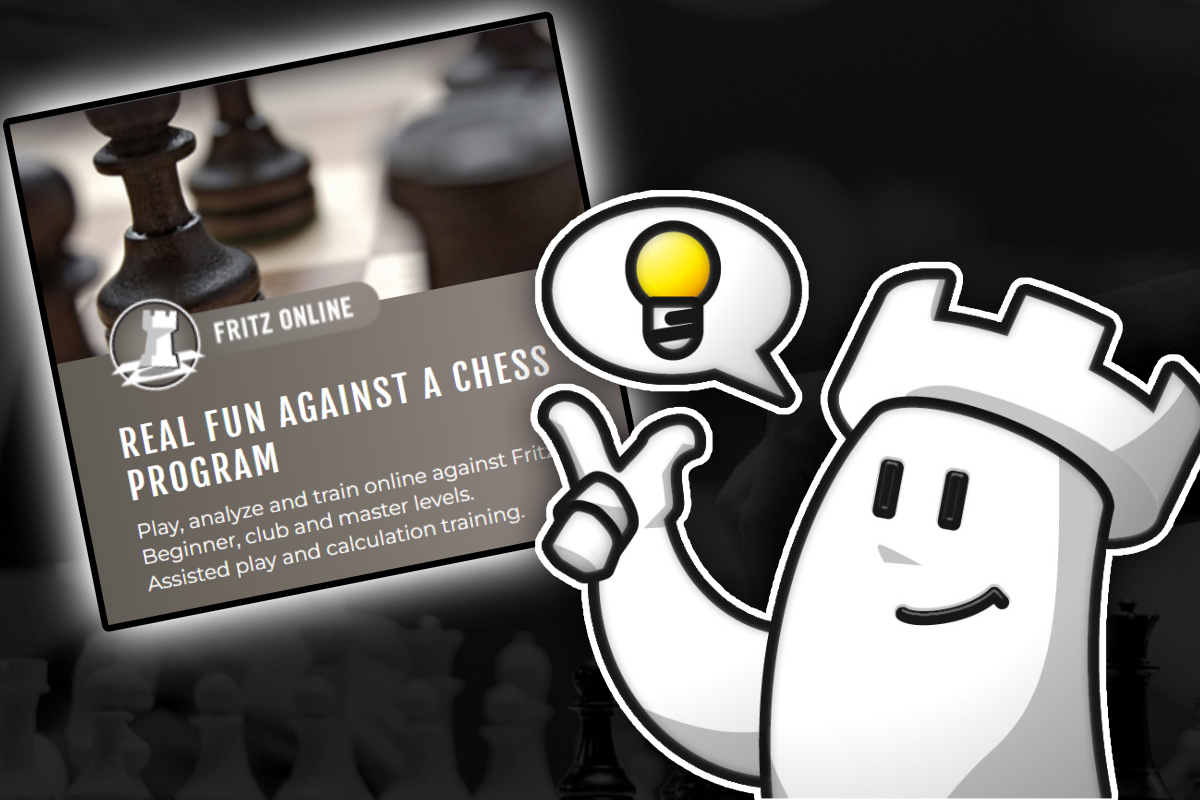


A great deal has been made of the useful playing options in Fritz 18, notably with its adaptive playing ability, and deservedly so, but while Fritz Online does not have this flexibility (yet), it has a slew of tools that make it fun, accessible, and educational. There were not words I had anticipated using to describe it, but after playing a game I can confidently say it is an experience I will be revisiting.
Just as with the other ChessBase Account web apps, you can access it either via the main ChessBase Account page:

Or directly on the News Page using the link on the right:
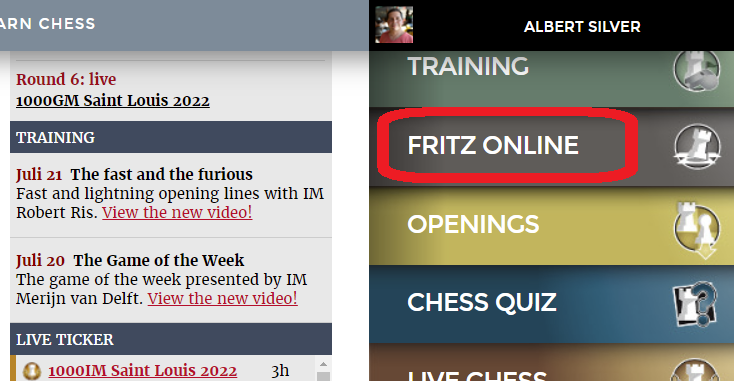
Most of the functions on the top don't really require an explanation, such as New Game, Make move, and so on.

Assisted Calculation is a special case and will be the subject of a dedicated article, but aside from it you'll probably want to set the Level to something you are happy with. This can be adjusted later as you see fit of course.

What follows is not a series of 'instructions' on how to play a game, but rather what you will see and experience as you do play one. I played a casual game on Club Player level, leaving the default options on. Aside from the board itself, your biggest source of information will be below the notation.
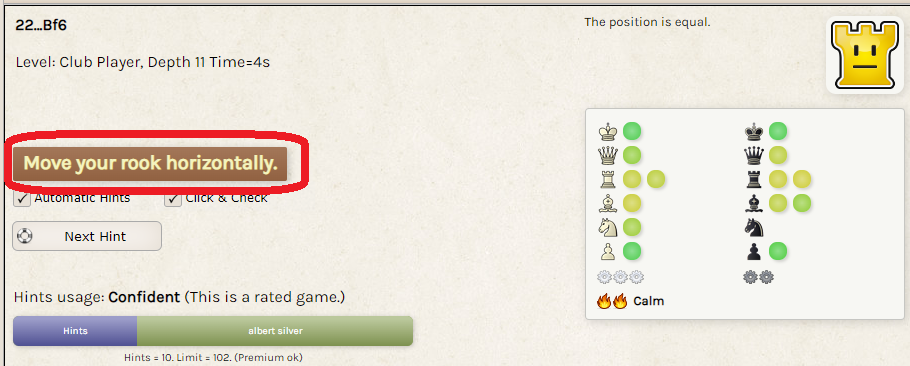
Here you will find a pane of information such as the ongoing hints it provides, and comments, as well as the piece heatmap. The piece heatmap can look a bit odd at first but it is fairly easy to understand.

The list of pieces of each side has colored balls ranging from red to dark green. These indicate what the program thinks of the placement of those pieces. If it is orange or red, then it is in a very bad spot, possibly in danger of being captured, while the darker the green, the better placed it is.
As you play, you will be shown a variety of hints ranging from the straightforward, to the fairly cryptic, to the outright clear but educational:
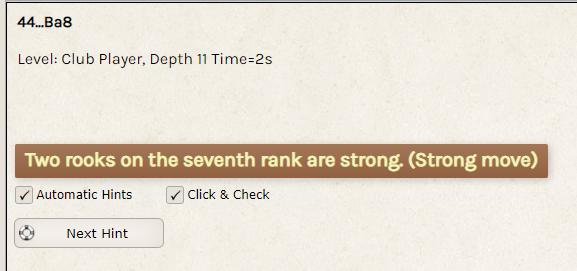
As you play it will also provide some light banter comments to keep the experience friendly and fun.
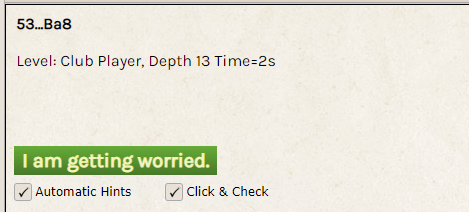
If things go your way, it will try to help you setup a brilliancy for you to find, and when it does, you may see a message like this:
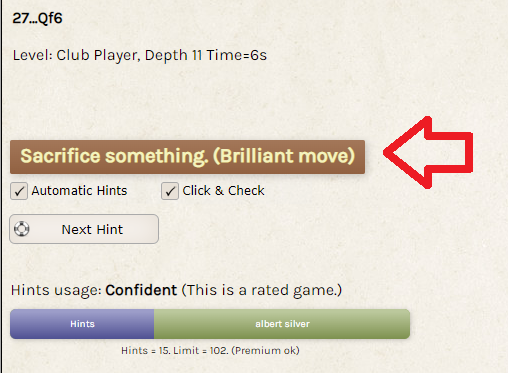
This popped up when the following position appeared on the board:
If you were alert, as I was, you were likely seeking winning shots regularly by now, but with this message from Fritz there was no longer any doubt: there was a winner here, so don't move until you find it.
To be fair, it wasn't too hard, and after playing 28. Nxd6! I was congratulated by Fritz, and now also saw in the game notation:

The game unfolded without too much trouble, though had I blundered it away I could have just taken the move back and tried again.
On the other hand, aside from direct hints, there is also another way to ask for a clue: long-pressing the piece you are considering. Suppose in this position I am considering moving the bishop.
I could click on it and keep the mouse button pressed. This is what would appear on the board:
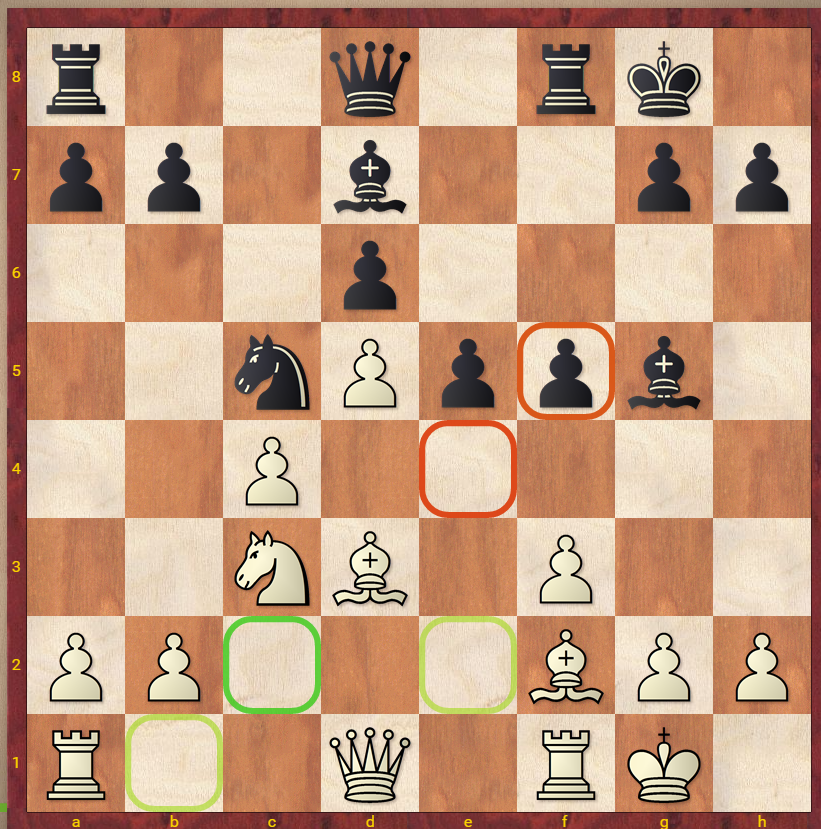
Red is because I lose a piece, orange I still lose it but gain a bit of material, light green on e2 is ok but not best, and Bc2 is a strong choice if that is what I want to do (I played 16. b4 here for the record).
Once the game is over, you can use the engine to ask it what it would play:

and you can save the game as a PGN file to share with someone or analyze in Chessbase for example.

Though this does not cover every option available, it more than suffices to show that as a casual training partner who won't mind takebacks, and will gladly give you hints throughout, it can be a fun and educational experience. I enjoyed it and will definitely be coming back for more.
Click here to subscribe to ChessBase Account
| Advertising |